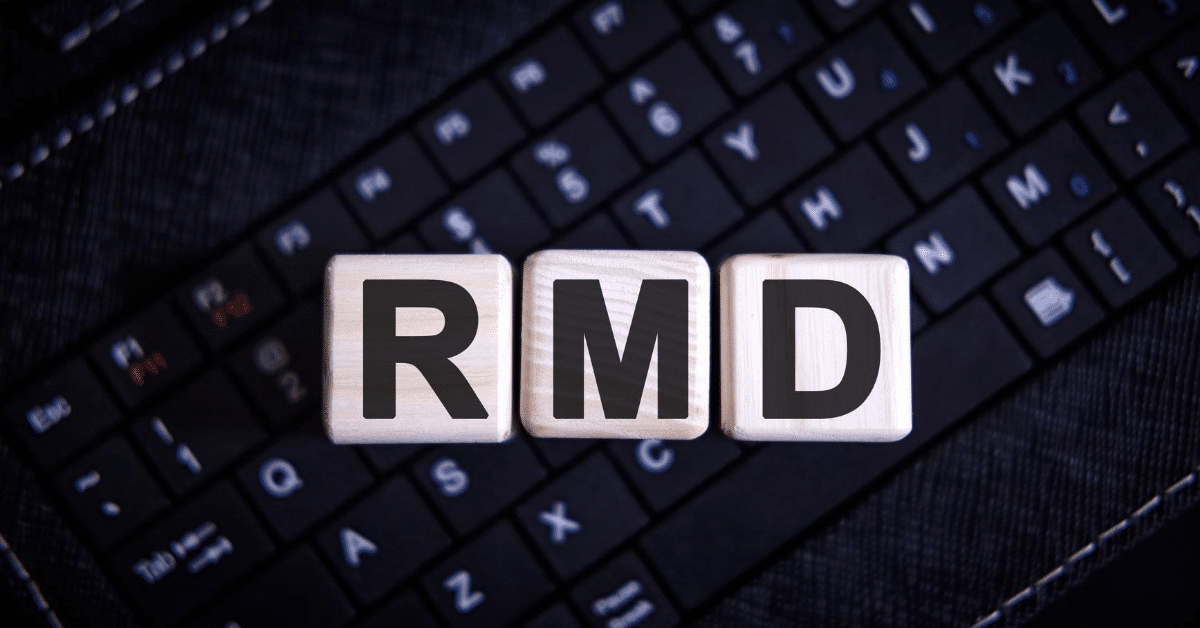Here is an overview of key provisions in the COVID relief legislation (the Consolidated Appropriations Act of 2021, or “the Act,” signed into law on Dec. 27, 2020) that affect individuals.
Recovery Rebate/Economic Impact Payment
Direct-to-taxpayer recovery rebate
The Act provides for a refundable recovery rebate credit for 2020 that will be paid in advance to eligible individuals, often automatically, early in 2021. (Code Sec. 6428A, as added by COVIDTRA Sec. 272) These payments are in addition to the direct payments/rebates provided for in earlier Federal legislation, the 2020 Coronavirus Aid, Relief, and Economic Security Act (CARES Act, PL 116-136, 3/27/2020), which were called Economic Impact Payments (EIP).
The amount of the rebate is $600 per eligible family member-$600 per taxpayer ($1,200 for married filing jointly), plus $600 per qualifying child. Thus, a married couple with two qualifying children will receive $2,400, unless a phase-out applies. The credit is phased out at a rate of $5 per $100 of additional income starting at $150,000 of modified adjusted gross income for marrieds filing jointly and surviving spouses, $112,500 for heads of household, and $75,000 for single taxpayers.
Treasury must make the advance payments based on the information on 2019 tax returns. Eligible taxpayers who claimed their EIPs by providing information through the nonfiler portal on IRS’s website will also receive these additional payments.
Nonresident aliens, persons who qualify as another person’s dependent, and estates or trusts don’t qualify for the rebate. Taxpayers without a Social Security number are likewise ineligible, but if only one spouse on a joint return has a Social Security number, that spouse is eligible for a $600 payment. Children must also have a Social Security number to qualify for the $600-per-child payments.
Taxpayers who receive an advance payment that exceeds the amount of their eligible credit (as later calculated on the 2020 return) will not have to repay any of the payment. If the amount of the credit determined on the taxpayer’s 2020 return exceeds the amount of the advance payment, taxpayers receive the difference as a refundable tax credit.
Advance payments of the rebates are generally not subject to offset for past due federal or state debts, and they are protected from bank garnishment or levy by private creditors or debt collectors.
Pro-taxpayer changes to CARES Act Economic Impact Payment rules
The CARES Act provided for direct payments/rebates to certain individuals; the payments were called Economic Impact Payments (EIPs). As with the new additional recovery rebate, the amount of the EIP refundable credit is determined on the taxpayer’s 2020 return.
The Act makes the following changes to the CARES Act EIP:
- Provides that the $150,000 limit on adjusted gross income before the credit amount starts to phase out, which, under the CARES Act, applied to joint returns, also applies to surviving spouses. (Code Sec, 6428(c)(1), as amended by Act Sec. 273(a)) This change may allow taxpayers who qualify to use the surviving-spouse filing status to claim a larger EIP on their 2020 returns.
- Makes the requirement to provide IRS with the taxpayer’s identification number identical to the same requirement under the new rebate, described above under “Direct-to-taxpayer recovery rebate.” (Code Sec, 6428(g), as amended by COVIDTRA Sec. 273(a)) (For Economic Impact Payments, both spouses had to provide Social Security numbers in order for any credit to be allowed.)
DEDUCTIONS
$250 educator expense deduction applies to PPE, other COVID-related supplies
The Act provides that eligible educators (i.e., kindergarten-through-grade-12 teachers, instructors, etc.) can claim the existing $250 above-the-line educator expense deduction for personal protective equipment (PPE), disinfectant, and other supplies used for the prevention of the spread of COVID-19 that were bought after March 12, 2020. IRS is directed to issue guidance to that effect by Feb. 28, 2021. (COVIDTRA Sec. 275; Code Sec. 62(a)(2)(D)(ii))
Under the above change, teachers who provide masks, disinfecting wipes, etc., for the classroom can receive an above-the-line deduction of up to $250 for these and other qualifying expenses that they pay.
7.5%-of-AGI “floor” on medical expense deductions is made permanent
The Act makes permanent the 7.5%-of-adjusted-gross-income threshold on medical expense deductions, which was to have increased to 10% of adjusted gross income after 2020.
The lower threshold will allow more taxpayers to take the medical expense deduction in 2021 and later years. (Code Sec. 213(a), as amended by Act Sec. 101)
Mortgage insurance premium deduction is extended by one year
The Act extends through 2021 the deduction for qualifying mortgage insurance premiums, which was due to expire at the end of 2020. The deduction is subject to a phase-out based on the taxpayer’s adjusted gross income. (Code Sec. 163(h)(3)(E)(iv)(I), as amended by Act Sec. 133)
Above-the-line charitable contribution deduction is extended through 2021; increased penalty for abuse. For 2020, individuals who don’t itemize deductions can take up to a $300 above-the-line deduction for cash contributions to “qualified charitable organizations.” The Act extends this above-the-line deduction through 2021 and increases the deduction allowed on a joint return to $600 (it remains at $300 for other taxpayers). (Code Sec. 170(p), as added by Act Sec. 212(a)) Taxpayers who overstate their cash contributions when claiming this deduction are subject to a 50% penalty (previously it was 20%). (Code Sec. 6662(l), as added by Act Sec. 212(b))
Extension through 2021 of allowance of charitable contributions up to 100% of an individual’s adjusted gross income
In response to the COVID pandemic, the limit on cash charitable contributions by an individual in 2020 was increased to 100% of the individual’s adjusted gross income. (The usual limit is 60% of adjusted gross income.) The Act extends this rule through 2021. (Code Sec. 170(b)(1)(G), as amended by Act Sec. 213)
EXCLUSIONS FROM INCOME
Exclusion for benefits provided to volunteer firefighters and emergency medical responders made permanent
Emergency workers who are members of a “qualified volunteer emergency response organization” can exclude from gross income certain state or local government payments received and state or local tax relief provided on account of their volunteer services. This exclusion was due to expire at the end of 2020, but the Act made it permanent. (Code Sec. 139B, as amended by Act Sec. 103)
Exclusion for discharge of qualified mortgage debt is extended, but limits on amount of excludable discharge are lowered
Usually, if a lender cancels a debt, such as a mortgage, the borrower must include the discharged amount in gross income. But under an exclusion that was due to expire at the end of 2020, a taxpayer can exclude from gross income up to $2 million ($1 million for married individuals filing separately) of discharge-of-debt income if “qualified principal residence debt” is discharged. The Act extends this exclusion through the end of 2025, but lowers the amount of debt that can be discharged tax-free to $750,000 ($375,000 for married individuals filing separately). (Code Sec. 108(a)(1)(E), as amended by Act Sec. 114(a))
Extension of exclusion for certain employer payments of student loans
Qualifying educational assistance provided under an employer’s qualified educational assistance program, up to an annual maximum of $5,250, is excluded from the employee’s income. The Coronavirus Aid, Relief, and Economic Security Act (CARES Act, PL 116-136, 3/27/2020) added to the types of payments that are eligible for this exclusion, “eligible student loan repayments” made after Mar. 27, 2020, and before Jan. 1, 2021. These payments, which are subject to the overall $5,250 per employee limit for all educational payments, are payments of principal or interest on a qualified student loan by the employer, whether paid to the employee or a lender. The Act extends the exclusion for eligible student loan repayments through the end of 2025. (Code Sec. 127(c)(1)(B), amended by Act Sec. 120)
TAX CREDITS
Individuals may elect to base 2020 refundable child tax credit (CTC) and earned income credit (EIC) on 2019 earned income
If an individual’s child tax credit (CTC) exceeds the taxpayer’s tax liability, the taxpayer is eligible for a refundable credit equal to 15% percent of so much of the taxpayer’s taxable “earned income” for the tax year as exceeds $2,500. And the earned income credit (EIC) equals a percentage of the taxpayer’s “earned income.” For both of these credits, earned income means wages, salaries, tips, and other employee compensation, if includible in gross income for the tax year. But for determining the refundable CTC and the EIC for 2020, the Act allows taxpayers to elect to substitute the earned income for the preceding tax year, if that amount is greater than the taxpayer’s earned income for 2020. (Act Sec. 211(a))
Health coverage tax credit (HCTC) for health insurance costs of certain eligible individuals is extended by one year
A refundable credit (known as the health coverage tax credit or “HCTC”) is allowed for 72.5% of the cost of health insurance premiums paid by certain individuals (i.e., individuals eligible for Trade Adjustment Assistance due to a qualifying job loss, and individuals between 55 and 64 years old whose defined-benefit pension plans were taken over by the Pension Benefit Guaranty Corporation). The HCTC was due to expire at the end of 2020, but the Act extended it through 2021. (Code Sec. 35(b)(1)(B), amended by Act Sec. 134)
New Markets tax credit extended
Briefly explained, the New Markets credit provides a substantial tax credit to either individual or corporate taxpayers that invest in low-income communities. This credit was due to expire at the end of 2020, but the Act extended it through the end of 2025. Carryovers of the credit were extended, as well. (Code Sec. 45D(f)(1)(H), amended by Act Sec. 112(a))
Nonbusiness energy property credit extended by one year
A credit is available for purchases of “nonbusiness energy property”-i.e., qualifying energy improvements to a taxpayer’s main home. The Act extends this credit, which was due to expire at the end of 2020, through 2021. (Code Sec. 25C(g)(2), amended by Act Sec. 141)
Qualified fuel cell motor vehicle credit extended by one year
The credit for purchases of new qualified fuel cell motor vehicles, which was due to expire at the end of 2020, was extended by the Act through the end of 2021. (Code Sec. 30B(k)(1), as amended by Act Sec. 142)
2-wheeled plug-in electric vehicle credit extended by one year
The 10% credit for highway-capable, two-wheeled plug-in electric vehicles (capped at $2,500) was extended until the end of 2021 by the Act. (Cod Sec. 30D(g)(3)(E)(ii), amended by Act Sec. 144)
Residential energy-efficient property (REEP) credit extended by two years, bio-mass fuel property expenditures included
Individual taxpayers are allowed a personal tax credit, known as the residential energy efficient property (REEP) credit, equal to the applicable percentages of expenditures for qualified solar electric property, qualified solar water heating property, qualified fuel cell property, qualified small wind energy property, and qualified geothermal heat pump property. The REEP credit was due to expire at the end of 2021, with a phase-down of the credit operating during 2020 and 2021.The Act extends the phase-down period of the credit by two years-through the end of 2023; the REEP credit won’t apply after 2023. (Code Sec. 25D(h), as amended by Act Sec. 148(a))
The Act also adds qualified biomass fuel property expenditures to the list of expenditures qualifying for the credit, effective beginning in 2021. (Code Sec. 25D(a), as amended by Act Sec. 148(b)).
DISASTER-RELATED CHANGES IN RETIREMENT PLAN RULES
10% early withdrawal penalty does not apply to qualified disaster distributions from retirement plans
A 10% early withdrawal penalty generally applies to, among other things, a distribution from employer retirement plan to an employee who is under the age of 59 1/2. The Act provides that the 10% early withdrawal penalty doesn’t apply to any “qualified disaster distribution” from an eligible retirement plan. The aggregate amount of distributions received by an individual that may be treated as qualified disaster distributions for any tax year may not exceed the excess (if any) of $100,000, over the aggregate amounts treated as qualified disaster distributions received by that individual for all prior tax years. (TCDTR Sec. 302(a))
Increased limit for plan loans made because of a qualified disaster
Generally, a loan from a retirement plan to a retirement plan participant cannot exceed $50,000. Plan loans over this amount are considered taxable distributions to the participant. The Act increases the allowable amount of a loan from a retirement plan to $100,000 if the loan is made because of a qualified disaster and meets various other requirements. (TCDTR Sec. 302(c)(3))
To discuss any questions you may have, please contact a member of your engagement team or reach out to us via our website.
© 2021 Thomson Reuters/Tax & Accounting. All Rights Reserved.












